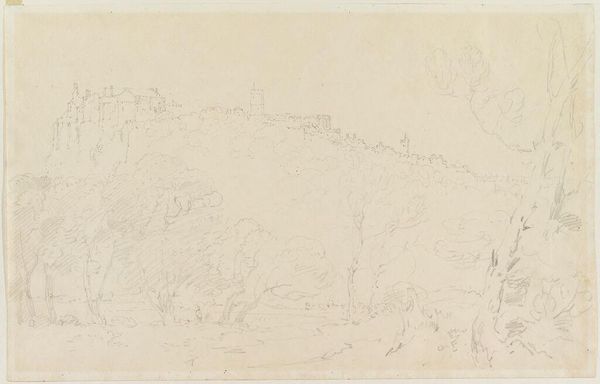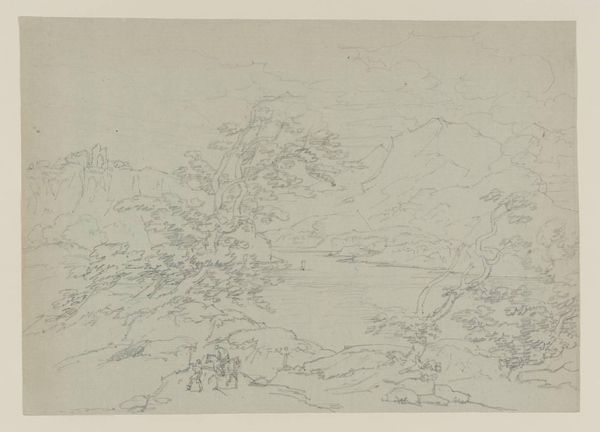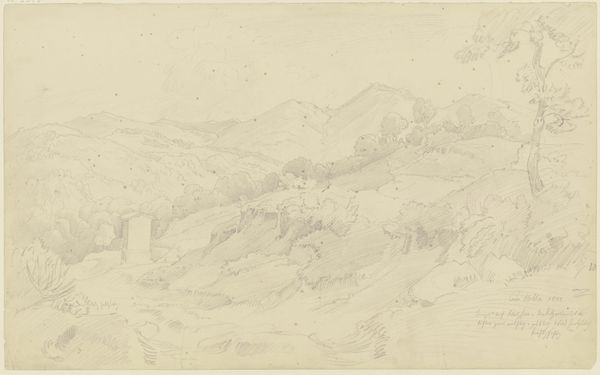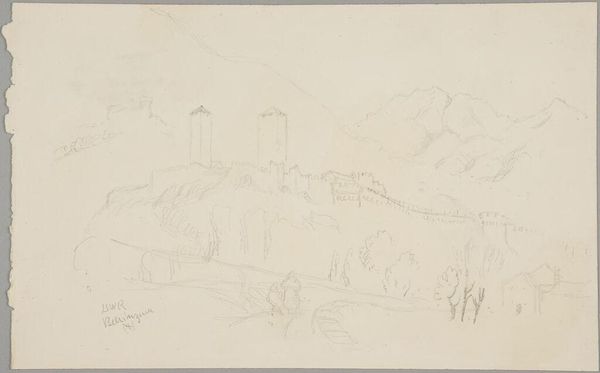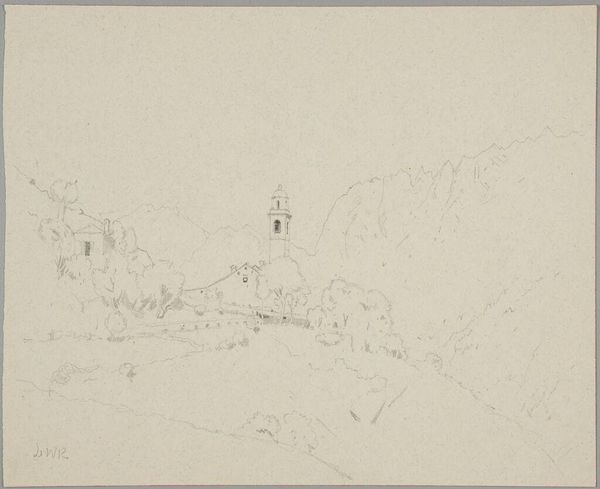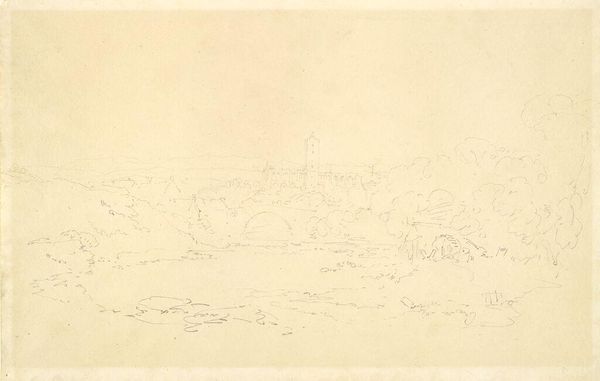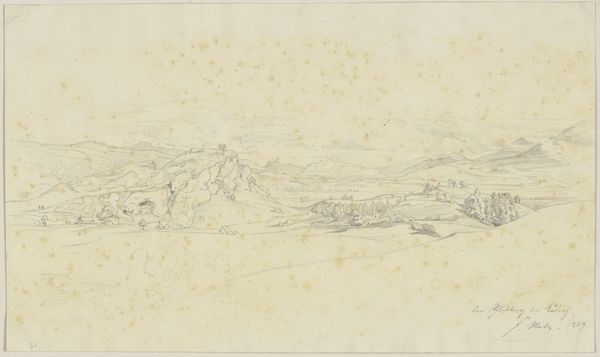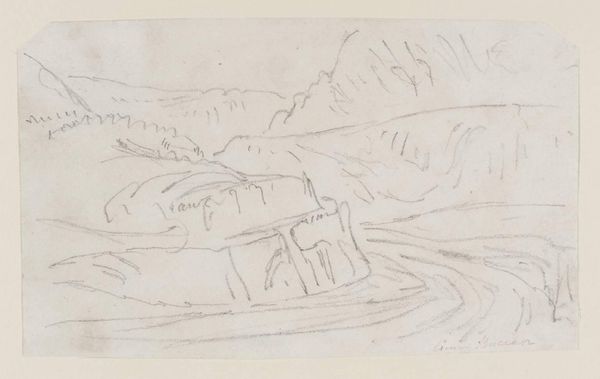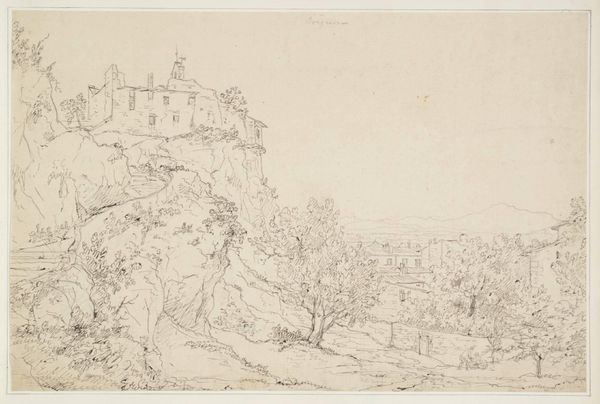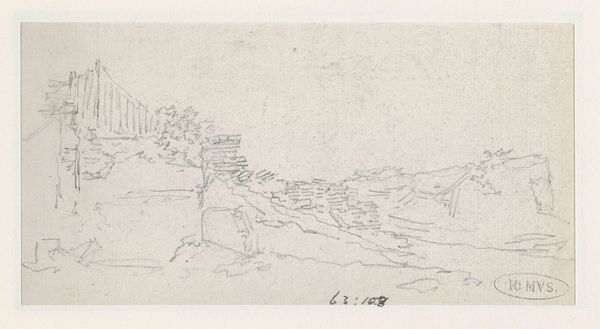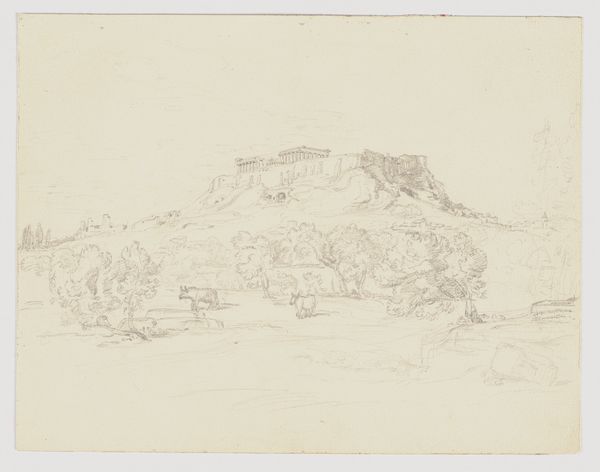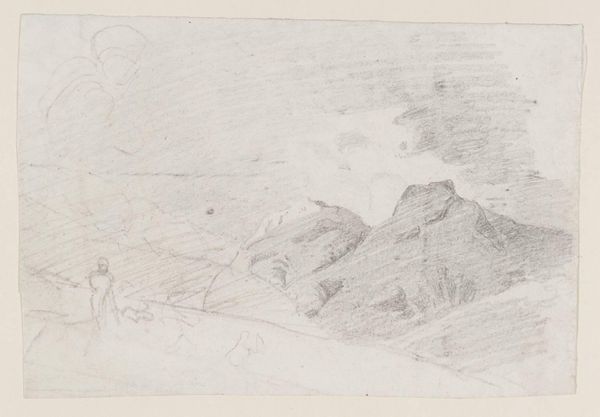
drawing, paper, pencil
#
drawing
#
dutch-golden-age
#
landscape
#
paper
#
pencil
Dimensions: height 279 mm, width 398 mm
Copyright: Rijks Museum: Open Domain
Curator: Before us is "Berglandschap," or "Mountain Landscape," a pencil drawing on paper by Leonaert Bramer, dating from around 1642 to 1653. Editor: There’s an ethereal quality to it. The pencil lines are so light, almost like a memory of a landscape rather than a depiction. A hilltop settlement in the distance...it feels distant and untouchable. Curator: The lightness reflects, in part, the nature of drawing as a preliminary, preparatory act. Drawings like these would have served various purposes in Bramer's studio. How the ready availability of drawing materials – pencils, various types of paper – shaped not only the landscape genre, but studio practice, workshops and eventually the market. Consider who supplied the paper, who made the pencils! These elements facilitated artistic production. Editor: That's interesting. For me, what resonates most is the implication of power inherent in landscape depiction. Who commissions these pieces? What political or social narratives do they convey to those consuming them? That hilltop settlement...is it being idealized or surveilled? Curator: I’d also point out how this piece exemplifies a loosening of artistic boundaries, moving between what might be viewed as ‘high’ and ‘low’ art. This is not necessarily destined to become an oil painting. Instead, the sketch has become an aesthetic object. The drawing itself becomes commodifiable, able to be circulated as is. Editor: Exactly, that touches upon the institutions facilitating or preventing that circulation: What role do galleries and private collections play? I can't help but ponder Bramer's position within Dutch society and how his artistry engaged with or challenged prevailing power structures. Curator: It invites us to look at what’s underpinning landscape art itself, beyond simple representation, and see how that changed with developing processes. Editor: It certainly does. Ultimately, I think "Berglandschap" leaves one contemplating not just the visible landscape, but the invisible societal forces that shaped its very perception and artistic rendition.
Comments
No comments
Be the first to comment and join the conversation on the ultimate creative platform.
